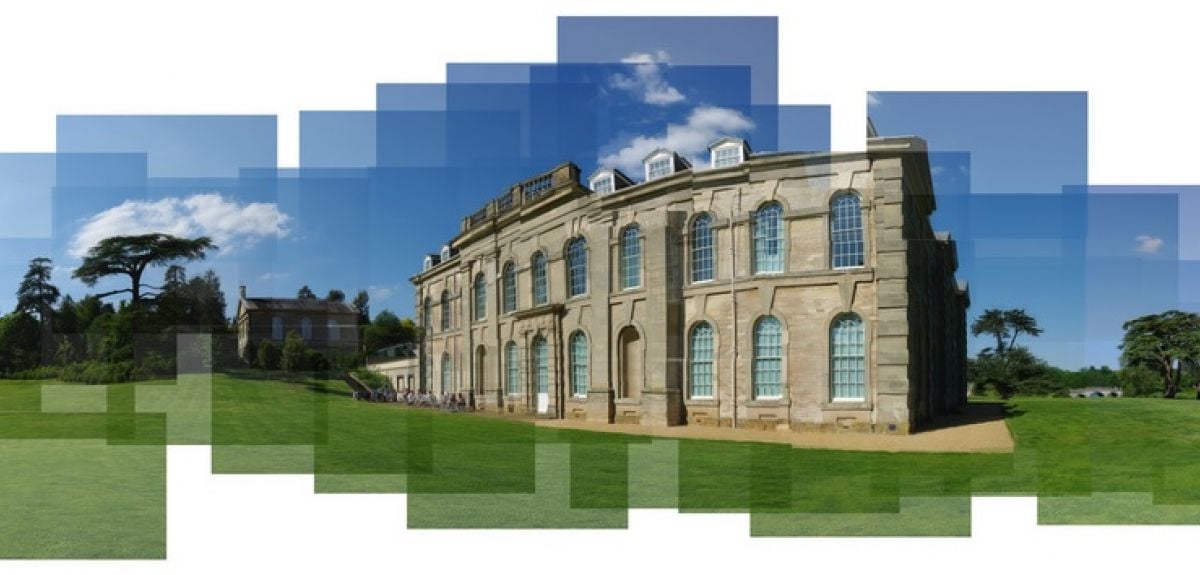
Jesse Loughborough (Flickr Creative Commons)
Victorian 'shelfie' goes viral
A Victorian woman’s political statement has inspired a diverse group of contributors, from prison reading groups to UN ambassador Emma Watson, to come together in an exhibition celebrating the value of reading.
‘Unsilencing the Library’, the award-winning latest exhibition at Warwickshire stately home Compton Verney, began life with a mystery: who had created the unusual false bookshelf which forms part of the original decoration in the so-called Women’s Library?
False bookshelves, used to disguise the door to a library, are often associated with Victorian whimsy.
But the Compton Verney example, which is composed exclusively of female authors and shows a deep concern with self-improvement, seems to be saying something rather serious.
Puzzled by this, the curators of the stately home called in Dr Sophie Ratcliffe of Oxford's English Faculty and Lady Margaret Hall to help figure out who might have commissioned it.
According to Dr Ratcliffe and her team, Dr Ceri Hunter and Dr Eleanor Lybeck, everything points towards Georgiana Verney, Lady Willoughby de Broke, who was mistress of Compton Verney in the 1860s.
She was a noted local philanthropist and anti-poverty campaigner and was later described by one of her descendants as having ‘notions of progress’ and being in favour of women’s suffrage.
Dr Ratcliffe describes the bookshelf as a ‘quiet feminist statement’ announcing something profound about Georgiana’s self-image.
Georgiana’s ‘shelfie’ inspired the Oxford team, together with Professor Steven Parissien, director of Compton Verney, to invite a group of ‘guest curators’ to fill out the library by choosing the books that mean something to them.
The shelves make a statement about a range of political issues as well as the importance of reading.
Among these curators is UN Ambassador Emma Watson, herself a visiting fellow of Lady Margaret Hall.
She has chosen feminist classics such as Margaret Atwood’s The Handmaid’s Tale and Persepolis by Marjane Satrapi for her collection. She is joined by writers Margo Jefferson and Alys Fowler, as well as members of reading groups from several local prisons, and students from the nearby Kineton High School.
Inspired by the schoolchildren’s feedback that ‘we don’t like exhibitions we can’t touch’, the installation will be fully interactive.
Visitors will be free to take the books off the shelves and examine the bookmarks placed inside them, explaining why these titles were chosen.
For the technologically-minded, there will be tablets to consult about the history of the room and the guest curators.
Books were chosen for many reasons; Margo Jefferson’s bookshelf focusses on race and coming of age, while Alys Fowler uses her shelf to make a statement about the environment.
Prisoners tended to choose escapist narratives, with swashbuckling adventure stories such as Dumas’ The Three Musketeers and fantasy classics such as Tolkien’s The Lord of the Rings proving popular.
But there was also a turn towards the practical; self-help books or funny books such as Bridget Jones’ Baby to help cope with the everyday realities of prison life.
One prisoner describes how James Clavell’s Shogun, which describes an English sailor’s adventures in feudal Japan, helped him with its description of a stranger adapting to a culture entirely unlike his own.
‘I see it as a kind of How-To Guide in dealing with some of the problems prison can generate,’ he says.
Books were also chosen for sentimental value. One particularly moving account relates how Roald Dahl’s Danny the Champion of the World, a book he remembered his teacher reading to him in school, helped one reader in HMP Bullingdon to connect with his young son.
‘I think one of the surprises about this exhibition is how similar all the shelves are, and I think that shows how much we’ve got in common,’ Dr Ratcliffe says.
The project, partially funded by a Knowledge Exchange Fellowship from TORCH (The Oxford Research Centre in the Humanities), has also brought together a small army of local artisans and academics.
Bookbinder John Richards helped recreate two missing panels of imitation books, while fabric makers Rapture and Wright designed a special fabric to decorate the room, inspired by Georgiana’s patronage of the Coventry ribbon weaving trade.
Important supporting research was done by art historian Pip Shergold and local historians Peter and Gill Ashley-Smith.
According to Dr Ratcliffe, the project’s success (‘Unsilencing the Library’ recently won a Vice Chancellor’s Public Engagement with Research Award) has been entirely down to the cooperation and generosity of many different people.
‘I see myself very much as the curator of other people’s brilliance; their knowledge, their expertise and the precious things they’ve shared with me.’
‘I think of this project as a celebration of the small things. Just one small detail in one room in the 1860s has sort of rippled out.
'It has gone to the heart of UK prisons, and to an academic in America, who we consulted with on the project. What’s surprising about this story is how you can unfold a really fascinating narrative from something small.’
‘Unsilencing the Library’ is now open at Compton Verney. You can find out more about the exhibition, and read the guest curators’ reasons for choosing their books, here.